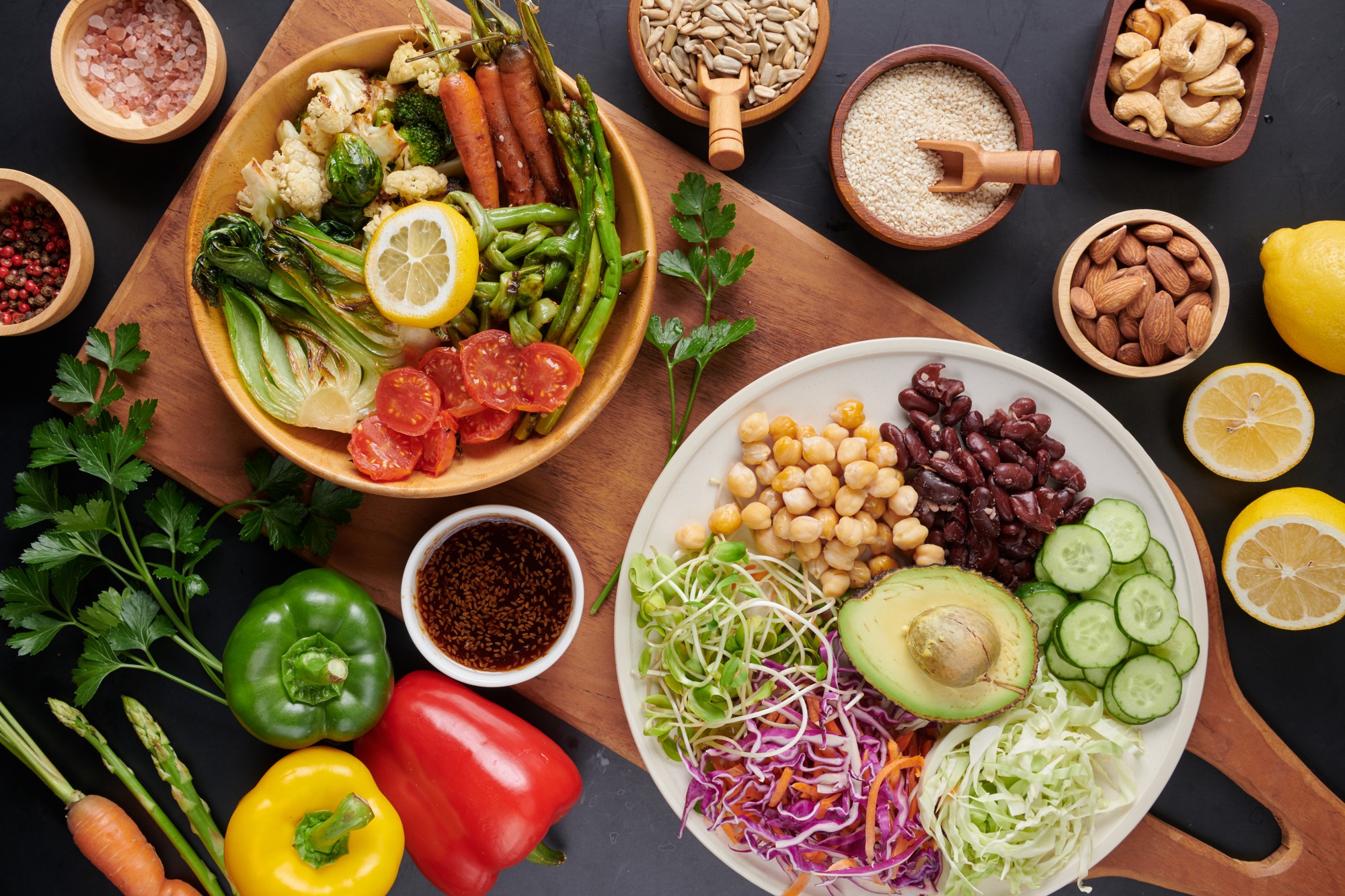The Complete Guide to Low-Calorie Foods: Eat More, Weigh Less
In a world where portion sizes continue to grow and processed foods dominate our plates, understanding low-calorie foods has become essential for maintaining a healthy weight and lifestyle. The concept of eating more while consuming fewer calories might seem contradictory, but it’s entirely possible when you choose the right foods. This comprehensive guide explores the science behind low-calorie eating, identifies the best foods for weight management, and provides practical strategies for incorporating these nutritional powerhouses into your daily routine.
Low-calorie foods offer the perfect solution for those seeking to lose weight, maintain their current weight, or simply improve their overall health without feeling deprived. These foods provide essential nutrients, keep you satisfied, and support your body’s natural functions while helping you create the caloric deficit necessary for weight loss or maintenance.
Understanding Caloric Density and Volume Eating
The foundation of successful low-calorie eating lies in understanding caloric density—the number of calories per gram of food. Foods with low caloric density provide fewer calories per bite, allowing you to eat larger portions while consuming fewer total calories. This principle, known as volume eating, enables sustainable weight management without the constant hunger that plagues many dieters.
Water content plays a crucial role in determining caloric density. Foods with high water content, such as fruits and vegetables, naturally contain fewer calories per gram because water provides volume without calories. This is why a large apple (about 200 grams) contains only 100 calories, while a small cookie (about 25 grams) might contain the same number of calories.
Fiber content also affects caloric density and satiety. High-fiber foods require more energy to digest, meaning your body burns calories simply processing them. Additionally, fiber creates bulk in your stomach, triggering satiety signals that help you feel full with fewer calories consumed.
The thermic effect of food represents another advantage of certain low-calorie options. Your body expends energy digesting, absorbing, and metabolizing food, with protein requiring the most energy (20-30% of calories consumed), followed by carbohydrates (5-10%) and fats (0-5%). This means choosing protein-rich, low-calorie foods provides a metabolic advantage.
Vegetables: The Ultimate Low-Calorie Foundation
Vegetables represent the cornerstone of any low-calorie eating plan, providing maximum nutrition with minimal calories. Most vegetables contain between 10-50 calories per cup, making them ideal for volume eating while supplying essential vitamins, minerals, and antioxidants.
Leafy greens lead the low-calorie vegetable category, with spinach containing just 7 calories per cup, lettuce providing 5 calories per cup, and kale offering 33 calories per cup. These nutritional powerhouses deliver folate, vitamin K, iron, and numerous antioxidants while adding substantial volume to meals. Use them as salad bases, blend them into smoothies, or incorporate them into soups and stir-fries.
Cruciferous vegetables including broccoli, cauliflower, Brussels sprouts, and cabbage provide exceptional nutritional value with minimal calories. One cup of broccoli contains only 25 calories while delivering vitamin C, folate, and cancer-fighting compounds. Cauliflower’s versatility makes it an excellent low-calorie substitute for higher-calorie foods like rice, potatoes, or pasta.
Summer squashes such as zucchini and yellow squash contain abundant water and minimal calories—about 20 calories per cup. Their mild flavor and versatile texture make them perfect for creating low-calorie pasta alternatives, adding bulk to soups, or incorporating into baked goods as moisture-rich ingredients.
Bell peppers provide vibrant color, satisfying crunch, and just 30 calories per cup while delivering more vitamin C than oranges. Their natural sweetness makes them enjoyable raw or cooked, and their sturdy structure makes them ideal for stuffing with other low-calorie ingredients.
Tomatoes offer umami flavor and lycopene antioxidants with only 32 calories per cup. Fresh tomatoes add bulk and flavor to salads, while canned tomatoes create satisfying, low-calorie soup and sauce bases without added sugars or oils.
Fruits: Nature’s Low-Calorie Desserts
Fruits provide natural sweetness, essential nutrients, and fiber while maintaining relatively low caloric density. The key to maximizing fruits’ low-calorie benefits lies in choosing whole fruits over juices and focusing on varieties with higher water and fiber content.
Berries rank among the lowest-calorie fruits while providing exceptional antioxidant content. Strawberries contain just 49 calories per cup, blueberries provide 84 calories per cup, and raspberries offer 64 calories per cup along with impressive fiber content. Their natural sweetness satisfies dessert cravings while providing nutrients that support immune function and brain health.
Watermelon lives up to its name with exceptional water content, providing only 46 calories per cup while helping maintain hydration. Its natural sweetness and refreshing quality make it perfect for satisfying sweet cravings, especially during warmer months.
Citrus fruits including oranges, grapefruits, and tangerines offer vitamin C, fiber, and natural tartness with moderate calorie counts. A medium orange contains about 62 calories, while half a grapefruit provides just 52 calories. The act of peeling and eating citrus fruits also slows consumption, promoting better satiety recognition.
Apples and pears provide satisfying crunch, natural sweetness, and substantial fiber with moderate calories—about 95 calories for a medium apple and 102 calories for a medium pear. Their portable nature makes them convenient snacks, while their fiber content promotes feelings of fullness.
Cantaloupe and honeydew melons offer natural sweetness and high water content with approximately 60 calories per cup. Their soft texture and mild flavor make them versatile additions to fruit salads, smoothies, or enjoyed alone as refreshing snacks.
Lean Proteins: Maximizing Satiety with Minimal Calories
Protein plays a crucial role in low-calorie eating by promoting satiety, preserving muscle mass during weight loss, and requiring significant energy for digestion. Choosing lean protein sources maximizes these benefits while minimizing calories from fat.
Chicken breast represents one of the leanest protein sources, providing about 140 calories and 26 grams of protein per 3.5-ounce serving. Remove the skin to further reduce calories while maintaining protein content. Chicken breast’s versatility allows for numerous preparation methods that add flavor without significant calories.
Fish and seafood offer excellent protein with minimal calories and beneficial omega-3 fatty acids. Cod provides just 105 calories per 3.5-ounce serving, while shrimp offers 99 calories with impressive protein content. Salmon, though higher in calories due to healthy fats, still provides excellent nutritional value and satiety.
Egg whites deliver pure protein with minimal calories—about 17 calories per large egg white with 4 grams of protein. While whole eggs provide additional nutrients, egg whites allow for larger portions when calories are a primary concern. Use them in omelets packed with vegetables for satisfying, low-calorie meals.
Greek yogurt, particularly non-fat varieties, provides substantial protein with relatively few calories. A cup of plain, non-fat Greek yogurt contains approximately 130 calories and 23 grams of protein. Choose plain varieties to avoid added sugars, and enhance flavor with fresh fruits or natural sweeteners.
Tofu and tempeh offer plant-based protein options with moderate calorie content. Firm tofu provides about 180 calories per cup with 20 grams of protein, while tempeh offers slightly more calories but additional fiber and nutrients from fermentation. Both absorb flavors well, making them versatile additions to low-calorie meals.
Low-Calorie Dairy and Alternatives
Dairy products and their alternatives can fit into low-calorie eating plans when chosen carefully. Focus on options with reduced fat content or naturally lower calories while maintaining protein and calcium content.
Skim milk provides protein, calcium, and vitamins with just 83 calories per cup compared to whole milk’s 149 calories. Use it in smoothies, cereals, or coffee to maintain nutritional benefits while reducing calorie intake.
Cottage cheese, particularly low-fat varieties, offers exceptional protein content with reasonable calories—about 163 calories and 28 grams of protein per cup of 1% cottage cheese. Its versatility allows both sweet and savory applications, from fruit parfaits to vegetable dips.
Unsweetened almond milk provides a low-calorie alternative to dairy milk with just 30-40 calories per cup. While lower in protein than dairy milk, it works well in smoothies, cereals, and baking applications where calories are a primary concern.
Non-fat mozzarella and other reduced-fat cheeses allow cheese enjoyment with fewer calories. Part-skim mozzarella provides about 72 calories per ounce compared to regular mozzarella’s 85 calories, while still offering protein and calcium.
Whole Grains and Complex Carbohydrates
While carbohydrates often receive criticism in weight loss discussions, choosing the right types and portions allows their inclusion in low-calorie eating plans. Focus on whole grains and high-fiber options that provide sustained energy and satiety.
Oatmeal prepared with water provides filling breakfast options with reasonable calories—about 150 calories per cooked cup of steel-cut oats. Add fresh fruits, cinnamon, or small amounts of nuts for flavor without excessive calories.
Quinoa offers complete protein and fiber with about 222 calories per cooked cup. Its nutty flavor and fluffy texture make it an excellent base for salads, side dishes, or main courses when combined with vegetables and lean proteins.
Brown rice provides more fiber and nutrients than white rice with similar calorie content—about 218 calories per cooked cup. Use it as a base for stir-fries, grain bowls, or as a side dish with portion control in mind.
Shirataki noodles, made from konjac root, provide virtually zero calories while offering pasta-like satisfaction. These translucent noodles contain mostly water and glucomannan fiber, making them ideal for creating low-calorie pasta dishes when combined with vegetables and lean proteins.
Soups and Broths: Liquid Satisfaction
Soup consumption significantly impacts satiety and calorie intake, making it an excellent strategy for low-calorie eating. The high water content and typically high vegetable content create filling meals with relatively few calories.
Vegetable-based soups provide maximum nutrition with minimal calories. A bowl of vegetable soup typically contains 50-100 calories while delivering substantial volume and nutrients. Focus on soups with clear broths, abundant vegetables, and minimal added fats.
Bone broth offers protein and minerals with very few calories—about 40-50 calories per cup depending on preparation. Sip it between meals for satiety, or use it as a base for more substantial soups with added vegetables and lean proteins.
Miso soup provides umami flavor and probiotics with just 84 calories per cup. Add seaweed, tofu, and vegetables for additional nutrition and volume without significant calorie increases.
Gazpacho and other cold vegetable soups offer refreshing options with minimal calories. These raw vegetable soups provide enzymes, vitamins, and hydration while satisfying hunger with very few calories.
Beverages: Hydration Without Calories
Beverage choices significantly impact daily calorie intake, making low-calorie options essential for weight management. Many people consume hundreds of unnecessary calories daily through beverages alone.
Water remains the ideal beverage choice, providing hydration without any calories. Enhance plain water with fresh fruit slices, cucumber, mint, or herbs for natural flavor without added sugars or artificial sweeteners.
Herbal teas offer variety and potential health benefits without calories. Green tea provides antioxidants and mild caffeine, while chamomile and peppermint teas offer relaxation benefits. Avoid adding sugar or high-calorie additions.
Black coffee contains virtually no calories and may boost metabolism slightly. Avoid high-calorie additions like cream, sugar, or flavored syrups. Instead, try cinnamon, vanilla extract, or unsweetened almond milk for flavor.
Sparkling water with natural flavors provides the satisfaction of carbonated beverages without calories. Many brands offer naturally flavored options without artificial sweeteners or added sugars.
Meal Planning and Preparation Strategies
Successfully incorporating low-calorie foods into your lifestyle requires planning and preparation. Having nutritious, low-calorie options readily available prevents reliance on higher-calorie convenience foods.
Batch cooking vegetables ensures constant availability of low-calorie options. Roast large quantities of mixed vegetables, prepare big salads, or chop vegetables for easy snacking and meal additions throughout the week.
Portion control tools help manage serving sizes even with low-calorie foods. While these foods allow larger portions, understanding appropriate serving sizes prevents overconsumption and helps establish healthy eating patterns.
Meal prepping complete low-calorie meals saves time and reduces decision fatigue. Prepare containers with pre-portioned proteins, vegetables, and whole grains for grab-and-go convenience throughout busy weeks.
Smart substitutions allow enjoyment of favorite dishes with fewer calories. Replace pasta with spiralized vegetables, use cauliflower rice instead of regular rice, or substitute Greek yogurt for sour cream in recipes.
Snacking Strategies with Low-Calorie Foods
Strategic snacking with low-calorie foods helps maintain stable blood sugar levels and prevents overeating at main meals. Choose snacks that combine protein and fiber for maximum satiety.
Vegetable and hummus combinations provide satisfying crunch and protein with reasonable calories. Two tablespoons of hummus with unlimited vegetables create filling snacks under 100 calories.
Fresh fruit paired with small amounts of protein creates balanced snacks. Apple slices with one tablespoon of almond butter provide fiber, protein, and natural sweetness for about 160 calories.
Air-popped popcorn offers satisfying volume and fiber with minimal calories—about 31 calories per cup. Season with herbs, nutritional yeast, or small amounts of parmesan cheese for flavor variety.
Raw vegetables with salsa provide crunch and flavor with virtually no calories. Bell peppers, cucumber, and celery with fresh salsa create satisfying snacks under 50 calories.
Common Mistakes and How to Avoid Them
Several common mistakes can undermine low-calorie eating efforts. Understanding and avoiding these pitfalls improves success rates and sustainability.
Extreme calorie restriction often backfires by triggering intense hunger and eventual overeating. Focus on moderate calorie reduction while emphasizing nutrient density rather than severely limiting intake.
Ignoring portion sizes even with low-calorie foods can prevent weight loss. While these foods allow larger portions than calorie-dense alternatives, unlimited consumption can still provide excess calories.
Neglecting protein intake often accompanies low-calorie eating but reduces satiety and can lead to muscle loss. Ensure adequate protein intake from lean sources to maintain metabolic rate and satisfaction.
Over-relying on processed “diet” foods instead of whole, natural options often introduces artificial ingredients and reduces nutritional value. Focus on naturally low-calorie whole foods rather than processed alternatives.
Creating Sustainable Low-Calorie Meal Plans
Developing sustainable meal plans with low-calorie foods requires balancing nutritional needs, personal preferences, and lifestyle factors. Successful plans provide variety, satisfaction, and practical implementation strategies.
Start each day with protein-rich, low-calorie breakfasts that provide sustained energy. Greek yogurt with berries, vegetable omelets, or oatmeal with protein powder create satisfying morning meals under 300 calories.
Build lunches around large salads with lean proteins and minimal added fats. Use vegetables as the primary volume component, add lean proteins for satiety, and include small amounts of healthy fats for nutrient absorption.
Design dinners with vegetables comprising half the plate, lean protein taking one quarter, and complex carbohydrates filling the remaining quarter. This formula ensures adequate nutrition while controlling calories.
Plan healthy snacks between meals to prevent excessive hunger that leads to overeating. Keep pre-portioned vegetables, fruits, and protein sources readily available for convenient snacking.
The Science Behind Satiety and Low-Calorie Foods
Understanding the biological mechanisms of hunger and satiety helps optimize low-calorie food choices for maximum effectiveness. Several factors influence how satisfied you feel after eating.
Stretch receptors in your stomach signal fullness based on food volume rather than calorie content. This explains why high-volume, low-calorie foods create satisfaction with fewer calories than calorie-dense alternatives.
Hormonal responses to different macronutrients affect hunger and satiety signals. Protein triggers the release of satiety hormones more effectively than carbohydrates or fats, explaining protein’s importance in weight management.
Blood sugar stability influences appetite control throughout the day. Low-calorie foods with fiber and protein help maintain steady blood sugar levels, preventing the hunger spikes associated with blood sugar crashes.
The cephalic phase of digestion begins before food consumption through sight, smell, and anticipation. Choosing visually appealing, aromatic low-calorie foods enhances satisfaction and prevents feelings of deprivation.
Long-Term Success with Low-Calorie Eating
Achieving long-term success with low-calorie eating requires developing sustainable habits rather than following restrictive temporary diets. Focus on gradual changes that become permanent lifestyle modifications.
Flexibility within structure allows for special occasions and social situations while maintaining overall low-calorie patterns. Develop strategies for navigating restaurants, parties, and travel while staying committed to your goals.
Regular monitoring without obsession helps track progress and identify areas needing adjustment. Use various metrics including energy levels, clothing fit, and overall well-being rather than focusing solely on scale weight.
Continuous education about nutrition and cooking techniques expands your repertoire of satisfying, low-calorie options. Learn new preparation methods, discover unfamiliar low-calorie ingredients, and experiment with flavor combinations.
Conclusion: Embracing Abundance Through Smart Choices
Low-calorie eating doesn’t mean deprivation or tiny portions. Instead, it represents a strategic approach to food selection that allows abundance while supporting health and weight management goals. By understanding caloric density, emphasizing nutrient-rich options, and implementing practical strategies, you can eat satisfying amounts of delicious food while maintaining a healthy weight.
The key lies in shifting focus from restriction to optimization—choosing foods that provide maximum nutrition, satisfaction, and volume with minimal calories. This approach creates sustainable eating patterns that support long-term health rather than short-term fixes that inevitably fail.
Remember that successful low-calorie eating is ultimately about creating a positive relationship with food that nourishes your body, satisfies your appetite, and supports your health goals. By incorporating the strategies and foods outlined in this guide, you can develop eating habits that serve you well for life while enjoying every bite along the way.
Start with small changes, be patient with the process, and celebrate the numerous benefits that come from nourishing your body with low-calorie, nutrient-dense foods. Your future self will thank you for the investment in health, energy, and vitality that comes from making these smart food choices today.










